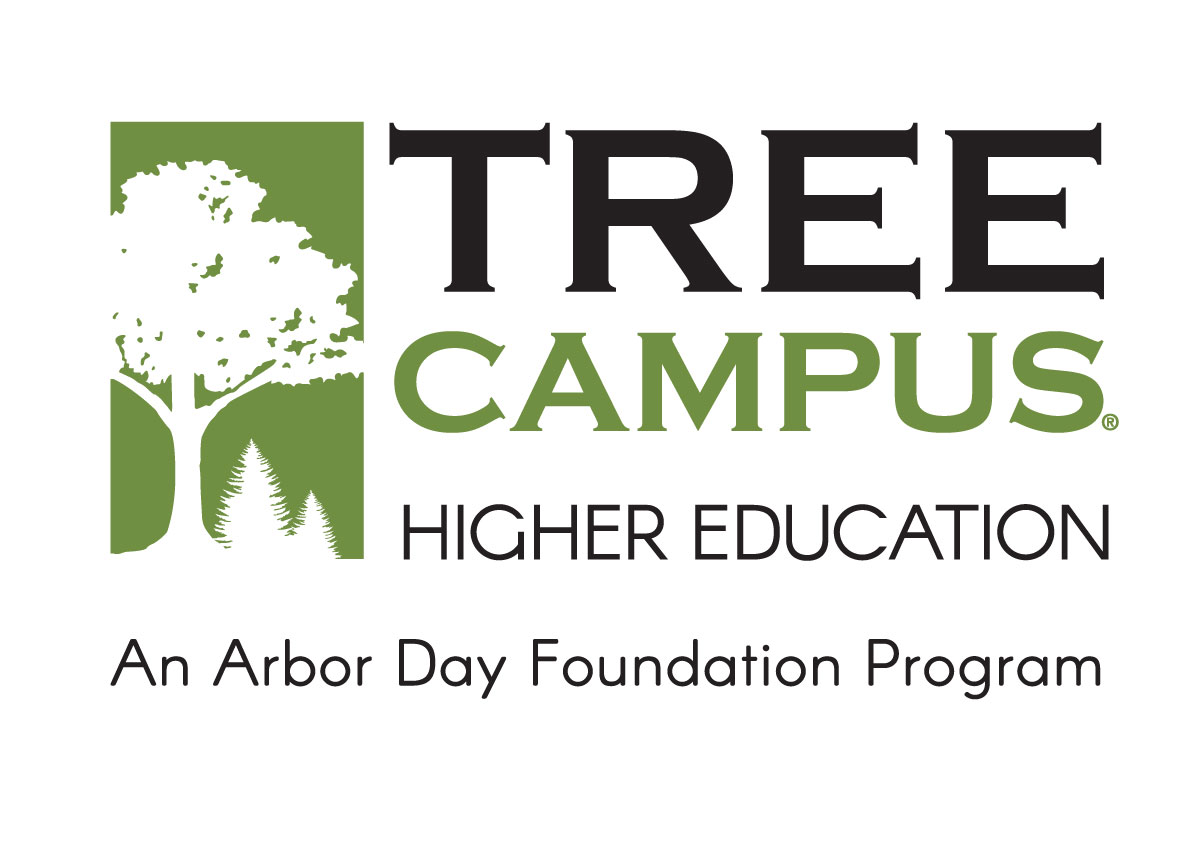Landscaping and Plant Maintenance
 Tree Campus USA
Tree Campus USA
Bowdoin College has earned distinction through the Tree Campus Higher Education Program! Bowdoin achieved the distinction by meeting Tree Campus Higher Education's five standards, including maintaining a tree advisory committee, a campus tree-care plan, dedicated annual expenditures for its campus tree program, an Arbor Day observance, and student service-learning project. Curious what kind of trees you are looking at as you cross the quad? Check out our GIS StoryMap for all the details along with some little known facts about Bowdoin's trees and the people who care for them!
BOWDOIN GROUNDS IS ELECTRIFYING
The Bowdoin grounds department has begun transitioning from gas-powered to electric-powered maintenance equipment. The team has already incorporated two electric zero-turn riding mowers, plus push mowers, leaf blowers, hedge trimmers, pole saws, snow blowers, and two utility vehicles. It's been a learning curve to manage the battery charging, but the quieter equipment and not having to fill them all up with gasoline has been a nice benefit.
Grounds personnel focus on maintaining healthy plants and a dense turf to prevent weeds or pests. Practices include aeration, compost tea, and hand weeding. Bowdoin utilizes an Integrated Pest Management Program and has been gradually expanding an exclusively organic treatment of campus grounds over the past twenty years.
- Organic Treatment of Grounds: Bowdoin began utilizing organic treatments starting in 2002. Bowdoin has expanded the organic treatment across 60 percent of the central campus, including the Cleaveland Quad, Main Quad, Coe Quad, and the President’s residence and guest house. The treatments utilize ingredients such as corn gluten, seaweed, bone meal and manure, and pest deterrents such as red pepper and garlic oils.
- Water Conservation The campus landscapes with native species that do not require irrigation. High visibility grassed areas of campus do receive water during dry weather. In recent years, as a means of conserving water, the college installed a below-ground irrigation system on athletic fields at Pickard Field and the Main and Cleaveland Quads. These systems monitor the moisture in the soil and only water accordingly. The systems are automated to operate in the early morning hours before the sun rises to reduce evaporation during the watering cycle. The campus maintains a mowing height of 2.5 to 3 inches, which encourages deeper root growth, thus reducing the need for watering. Utilizing mulching mowers, grass clippings are left on the lawn. On the rare occasion when they need to be removed, the clippings are composted.
- Tree Care: Bowdoin maintains a GIS tree inventory of the 1600 trees on campus. Bowdoin plants have a wide diversity of species as a precaution against disease. The College has worked diligently over the past ten years to eliminate parking near tree roots, avoiding root compaction. Any time a tree dies on campus, every effort is made to replace it within a year. For each tree that needs to be removed from the quad, a new tree is planted.
- Snow and Ice removal: To reduce the negative impact of salting during Maine winters, Bowdoin uses a product called Magic SaltTM. Magic Salt is ordinary rock salt that has been treated with an agricultural by-product of the distilling process blended with magnesium chloride. The result is a product that allows the reduction of salt use by roughly 30%. Another measure taken to protect the trees from winter road and sidewalk salting is the application of gypsum around the trees, which helps reduce the salt uptake in the roots.
- Stormwater: Bowdoin is installing its first green roof on its central heating plant in the fall of 2011, after a year-long trial period. Consisting of various sedums, the roof is expected to absorb water on-site, expand the life of the roof and provide a scenic view from the LEED Silver certified Buck Fitness Center. Other low-impact development techniques used to treat stormwater on-site include a rainwater capture system on the roof of two dorms (we utilize the water for toilet flushing in the two buildings), and stormwater retentions ponds, vegetative swales, infiltration galleries, under drained soil filters, and under drained Bioretention cells. Additionally, surfaces are designed to direct rainwater runoff toward plants and maintain plant health.
- Composting: Organic waste from grounds keeping is composted by a local contractor in exchange for loam that is used around campus. The Grounds Department also chips wood debris to be used on campus trails.